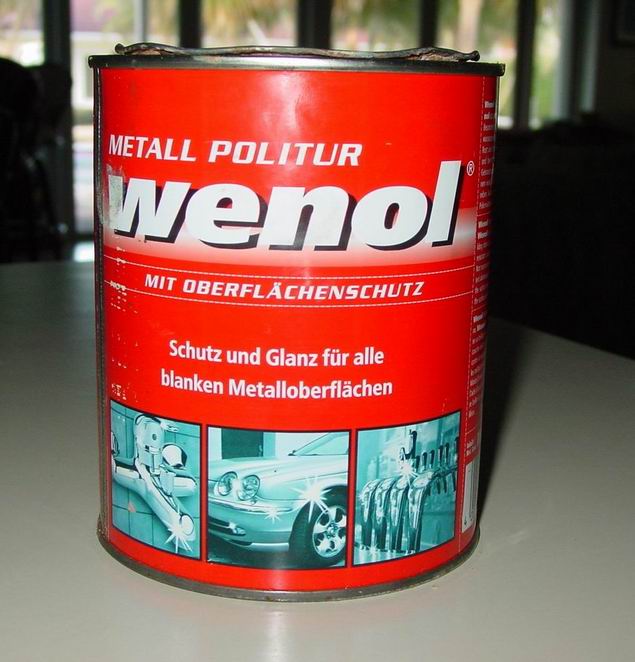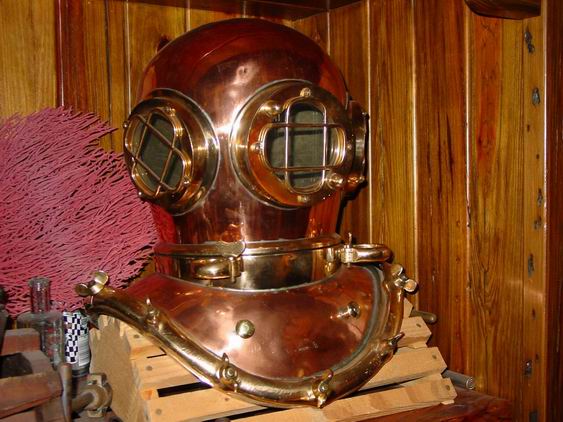| Author |
Message |
    
rbprice
| | Posted on Tuesday, June 01, 2004 - 08:09 pm: | 




|
Is there any downside to soaking brass parts in white vinegar (5% acetic acid) followed by a thorough scrubbing with hotwater and a soap pad? It sure does a great job of getting into all the interstitial spaces.
Followed up with a coating of clear laquer.
Thanks
Bob Price |
    
Richard Day
| | Posted on Tuesday, June 01, 2004 - 10:34 pm: | 




|
Laquer will last maybe two years then it has to be removed and polishing redone. USE clear polyurethane varnish, oil base not water based. Three coats and don't touch the raw polished brass with bare hands. After the third coat hardens then you can handle without fear of finger prints turning up in two years time. |
    
rbprice
| | Posted on Wednesday, June 02, 2004 - 07:41 am: | 




|
Thanks for the advice Dick. How well does the polyurethane stand up to gasoline on, for instance, a carburetor? |
    
Richard Day
| | Posted on Wednesday, June 02, 2004 - 08:34 am: | 




|
Like lacquer it doesn't forgot to mention that I never use it on a carburetor that I intend to run at shows. I just try to keep my bare hands off the carburetor that isn't treated as much as possible. I do treat the brass intake manifolds etc. where it is unlikly gasoline will come in contact with the polished brass. Oil lines no problem. |
    
doctorbigdaddy
New member
Username: doctorbigdaddy
Post Number: 2
Registered: 10-2011
| | Posted on Sunday, October 23, 2011 - 10:38 am: | 




|
A great way to clean tarnished brass is too use sea salt i cup in two cups of white vinegar.This will remove most of the tarnish and with a stiff soft bristle brush you can get into the crevices of intricate castings . . after cleaning the part will be fairly bright , but finish the job with Brasso and wash it with lacquer thinner after you use the Brasso. After drying don't handle the part without rubber gloves.I agree with Mr Day use a polyurethane varnish and use three coats. |
    
oldenginebob
Member
Username: oldenginebob
Post Number: 7
Registered: 02-2011
| | Posted on Sunday, October 23, 2011 - 10:54 am: | 




|
When in the Navy many years ago working in the mess hall I had to polish the brass pipes in the dishwasher. I found that Catchup worked wonders if you were not caught by the master at arms. You had to improvise in them days. |
    
keith
Senior Member
Username: keith
Post Number: 337
Registered: 02-2002

| | Posted on Monday, October 24, 2011 - 04:28 pm: | 




|
Doctorbigdaddy,
is there a difference between using sea salt and regular salt? I have used regular salt and the only issue I have is the brass comes out a pinkish red.
Keith, |
    
richarddurgee
Senior Member
Username: richarddurgee
Post Number: 2690
Registered: 11-2001
| | Posted on Monday, October 24, 2011 - 06:05 pm: | 




|
*
Cleaned and polished a lot of marine copper
and brass in last 40 yrs haven't found a better one than Wenol Red.
Cleaning heavy stuff I use different grades of steel wool for fine shine use cloth.
its available on line sometimes ebay !


* |
    
doctorbigdaddy
New member
Username: doctorbigdaddy
Post Number: 3
Registered: 10-2011
| | Posted on Monday, October 24, 2011 - 10:00 pm: | 




|
Keith,
The sea salt is not pure sodium chloride but contains other metallic salts . also it doesn't have iodine added . perhaps that's why it dosn't cause a red change in the brass. I have used this for years and the formula was passed down to me by an old boat builder. |
    
jb_castagnos
Senior Member
Username: jb_castagnos
Post Number: 627
Registered: 07-2002

| | Posted on Monday, October 24, 2011 - 10:49 pm: | 




|
I remember reading that the acid in vinegar attacks the zinc in the brass, leaving a copper color, it can be polished of. I don't think different salts will change this. Soaking is worse than rubbing with the mixture. |
    
silverghost
Advanced Member
Username: silverghost
Post Number: 33
Registered: 05-2009
| | Posted on Sunday, January 22, 2012 - 10:46 am: | 




|
Brass is actually an alloy mixture of the metal elements copper, & zinc, with a few trace elements mixed-in depending on the alloy.
Be Careful~
Strong acids will eat-out the zinc on the surface of the brass leaving it a pinkish copper color.
Bronze is an alloy mixture of copper & tin with other trace elements mixed-in depending on the type & intended use of the bronze.
Acids usually will not harm bronze. |
    
robert
Senior Member
Username: robert
Post Number: 476
Registered: 07-2003
| | Posted on Saturday, January 28, 2012 - 06:50 pm: | 




|
If you have heavy oxidization on a complex piece with many inaccessible areas for regular polishing, the best method I know of is soda blasting. This will get paint, dirt, grease and all oxides off, but will not stipple or etch the surface like glass beads, walnut shell, corn husk or other kinds of media blasting.
I don't like acids because they all etch the surface to some degree, which means not only polishing to remove the etching, but chemical and perhaps metallurgical changes in the surface layer of metal. The "grain" that shows up in brass after soaking in ammonia or vinegar is an example of this.
Power buffing looking impressive, but it removes metal fast, rounds corners and edges and is otherwise a PITA.
Sorry to sound like a know-it-all, but that's my experience.
(Beautiful helmet and piece of coral Richard!) |


